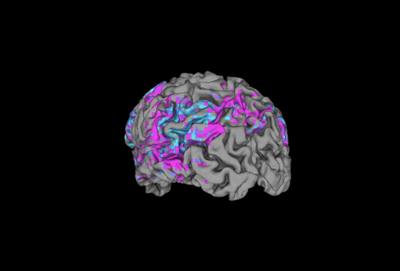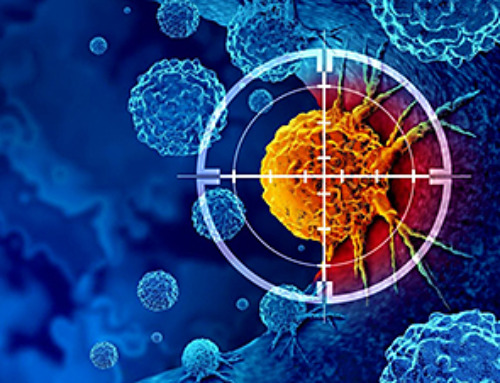By eavesdropping on the brains of living people, scientists have created the highest-resolution map yet of the neurons that encode the meanings of various words1. The results hint that, across individuals, the brain uses the same standard categories to classify words — helping us to turn sound into sense.
The study is based on words only in English. But it’s a step along the way to working out how the brain stores words in its language library, says neurosurgeon Ziv Williams at the Massachusetts Institute of Technology in Cambridge. By mapping the overlapping sets of brain cells that respond to various words, he says, “we can try to start building a thesaurus of meaning”.
The work was published today in Nature.
Mapping meaning
The brain area called the auditory cortex processes the sound of a word as it enters the ear. But it is the brain’s prefrontal cortex, a region where higher-order brain activity takes place, that works out a word’s ‘semantic meaning’ — its essence or gist.
Previous research2 has studied this process by analysing images of blood flow in the brain, which is a proxy for brain activity. This method allowed researchers to map word meaning to small regions of the brain.
But Williams and his colleagues found a unique opportunity to look at how individual neurons encode language in real time. His group recruited ten people about to undergo surgery for epilepsy, each of whom had had electrodes implanted in their brains to determine the source of their seizures. The electrodes allowed the researchers to record activity from around 300 neurons in each person’s prefrontal cortex.
As participants listened to multiple short sentences containing a total of around 450 words, the scientists recorded which neurons fired and when. Williams says that around two or three distinct neurons lit up for each word, although he points out that the team recorded only the activity of a tiny fraction of the prefrontal cortex’s billions of neurons. The researchers then looked at the similarity between the words that activated the same neuronal activity.
A neuron for everything
The words that the same set of neurons responded to fell into similar categories, such as actions, or words associated with people. The team also found that words that the brain might associate with one another, such as ‘duck’ and ‘egg’, triggered some of the same neurons. Words with similar meanings, such as ‘mouse’ and ‘rat’, triggered patterns of neuronal activity that were more similar than the patterns triggered by ‘mouse’ and ‘carrot.’ Other groups of neurons responded to words associated with more-abstract concepts: relational words such as ‘above’ and ‘behind’, for instance.

Mind-reading machines are here: is it time to worry?
The categories that the brain assigns to words were similar between participants, Williams says, suggesting human brains all group meanings in the same way.
The prefrontal cortex neurons didn’t distinguish words by their sounds, only their meanings. When a person heard the word ‘son’ in a sentence, for instance, words associated with family members lit up. But those neurons didn’t respond to ‘Sun’ in a sentence, despite these words having an identical sound.
Mind reading
To an extent, the researchers were able to determine what people were hearing by watching their neurons fire. Although they couldn’t recreate exact sentences, they could tell, for example, that a sentence contained an animal, an action and a food, in that order.
“To get this level of detail and have a peek at what’s happening at the single-neuron level is pretty cool,” says Vikash Gilja, an engineer at the University of California San Diego and chief scientific officer of the brain–computer interface company Paradromics. He was impressed that the researchers could determine not only the neurons that corresponded to words and their categories, but also the order in which they were spoken.
Recording from neurons is much faster than using imaging; understanding language at its natural speed, he says, will be important for future work developing brain–computer interface devices that restore speech to people who have lost that ability.
News
Magnetic nanoparticles that successfully navigate complex blood vessels may be ready for clinical trials
Every year, 12 million people worldwide suffer a stroke; many die or are permanently impaired. Currently, drugs are administered to dissolve the thrombus that blocks the blood vessel. These drugs spread throughout the entire [...]
Reviving Exhausted T Cells Sparks Powerful Cancer Tumor Elimination
Scientists have discovered how tumors secretly drain the energy from T cells—the immune system’s main cancer fighters—and how blocking that process can bring them back to life. The team found that cancer cells use [...]
Very low LDL-cholesterol correlates to fewer heart problems after stroke
Brigham and Women's Hospital's TIMI Study Group reports that in patients with prior ischemic stroke, very low achieved LDL-cholesterol correlated with fewer major adverse cardiovascular events and fewer recurrent strokes, without an apparent increase [...]
“Great Unified Microscope” Reveals Hidden Micro and Nano Worlds Inside Living Cells
University of Tokyo researchers have created a powerful new microscope that captures both forward- and back-scattered light at once, letting scientists see everything from large cell structures to tiny nanoscale particles in a single shot. Researchers [...]
Breakthrough Alzheimer’s Drug Has a Hidden Problem
Researchers in Japan found that although the Alzheimer’s drug lecanemab successfully removes amyloid plaques from the brain, it does not restore the brain’s waste-clearing system within the first few months of treatment. The study suggests that [...]
Concerning New Research Reveals Colon Cancer Is Skyrocketing in Adults Under 50
Colorectal cancer is striking younger adults at alarming rates, driven by lifestyle and genetic factors. Colorectal cancer (CRC) develops when abnormal cells grow uncontrollably in the colon or rectum, forming tumors that can eventually [...]
Scientists Discover a Natural, Non-Addictive Way To Block Pain That Could Replace Opioids
Scientists have discovered that the body can naturally dull pain through its own localized “benzodiazepine-like” peptides. A groundbreaking study led by a University of Leeds scientist has unveiled new insights into how the body manages pain, [...]
GLP-1 Drugs Like Ozempic Work, but New Research Reveals a Major Catch
Three new Cochrane reviews find evidence that GLP-1 drugs lead to clinically meaningful weight loss, though industry-funded studies raise concerns. Three new reviews from Cochrane have found that GLP-1 medications can lead to significant [...]
How a Palm-Sized Laser Could Change Medicine and Manufacturing
Researchers have developed an innovative and versatile system designed for a new generation of short-pulse lasers. Lasers that produce extremely short bursts of light are known for their remarkable precision, making them indispensable tools [...]
New nanoparticles stimulate the immune system to attack ovarian tumors
Cancer immunotherapy, which uses drugs that stimulate the body’s immune cells to attack tumors, is a promising approach to treating many types of cancer. However, it doesn’t work well for some tumors, including ovarian [...]
New Drug Kills Cancer 20,000x More Effectively With No Detectable Side Effects
By restructuring a common chemotherapy drug, scientists increased its potency by 20,000 times. In a significant step forward for cancer therapy, researchers at Northwestern University have redesigned the molecular structure of a well-known chemotherapy drug, greatly [...]
Lipid nanoparticles discovered that can deliver mRNA directly into heart muscle cells
Cardiovascular disease continues to be the leading cause of death worldwide. But advances in heart-failure therapeutics have stalled, largely due to the difficulty of delivering treatments at the cellular level. Now, a UC Berkeley-led [...]
The basic mechanisms of visual attention emerged over 500 million years ago, study suggests
The brain does not need its sophisticated cortex to interpret the visual world. A new study published in PLOS Biology demonstrates that a much older structure, the superior colliculus, contains the necessary circuitry to perform the [...]
AI Is Overheating. This New Technology Could Be the Fix
Engineers have developed a passive evaporative cooling membrane that dramatically improves heat removal for electronics and data centers Engineers at the University of California San Diego have created an innovative cooling system designed to greatly enhance [...]
New nanomedicine wipes out leukemia in animal study
In a promising advance for cancer treatment, Northwestern University scientists have re-engineered the molecular structure of a common chemotherapy drug, making it dramatically more soluble and effective and less toxic. In the new study, [...]
Mystery Solved: Scientists Find Cause for Unexplained, Deadly Diseases
A study reveals that a protein called RPA is essential for maintaining chromosome stability by stimulating telomerase. New findings from the University of Wisconsin-Madison suggest that problems with a key protein that helps preserve chromosome stability [...]





















